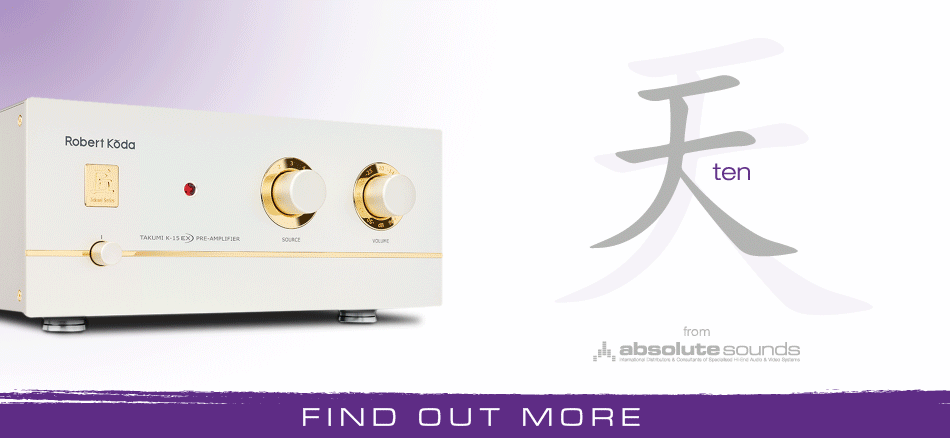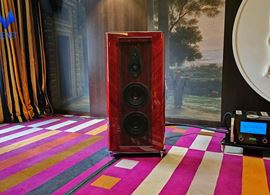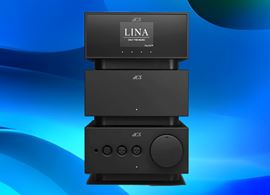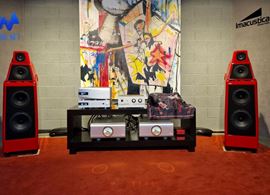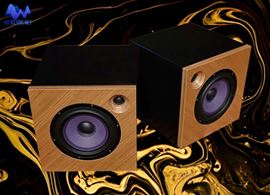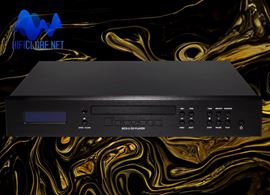Until today, the Focal Bathys, priced at €800, which won a Hificlube award in 2023, have been my favourite wireless and ANC headphones. However, the prospect of testing the new Dali iO12 closed-back ANC wireless headphones, priced at €999, presents an exciting challenge for an audiophile like me, accustomed to listening to 3-grand High-end open-back planar magnetic and electrostatic headphones.
Dali is renowned for being a loudspeaker manufacturer, and despite its limited focus on headphones—its catalogue comprises only the iO4 and iO6—the new iO12 was introduced as a contender in the High-end audio market, boasting unique features that set it apart from its competitors, like full passive operation.

The iO12 comes with several accessories, including:
- Hard case
- 1.2 m USB-C cable for charging and USN audio
- 1.2 m cable with stereo mini jack
- 3.0 m cable with stereo mini jack
- Adapter from 3.5 mm to 6.3 mm jack
- Adapter for dual aeroplane jacks.
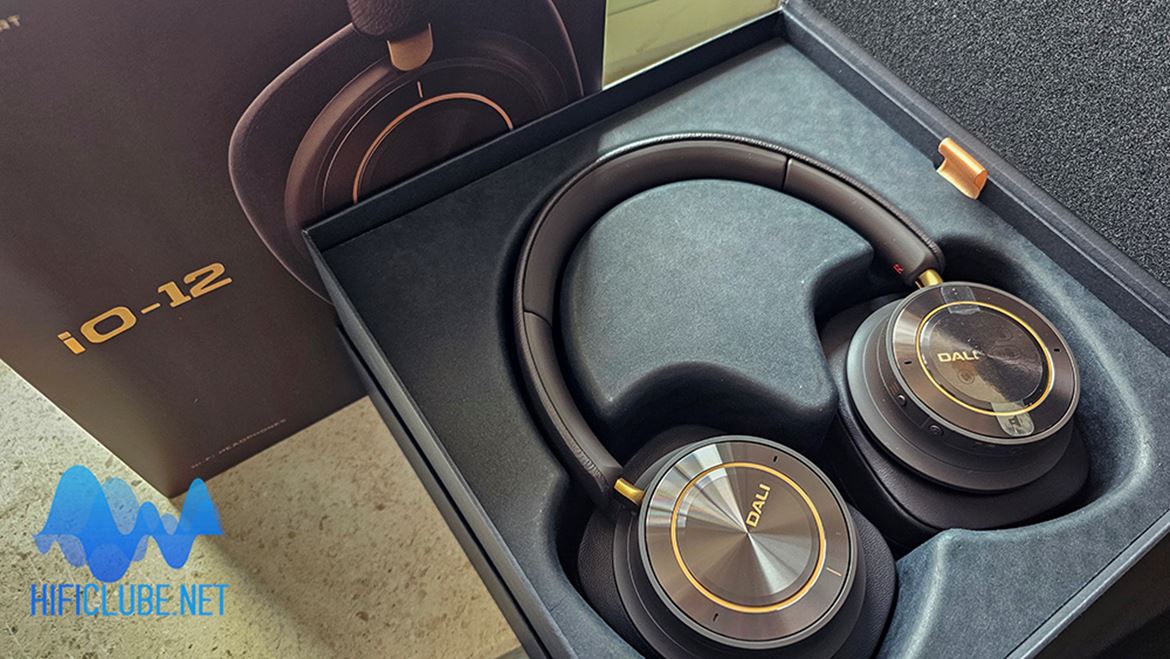
To Be or Not to Be High-end
High-end quality is subjective, much like holy water—you take as much as you believe in. Dali claims the iO12s are truly High-end stuff, regarding build, technology, and sound. However, the ultimate test lies in the sound quality assessment, a crucial aspect of any High-end headphone review.
It's up to me to confirm or refute this bold claim in a market where dedicated High-end headphone brands such as Audeze, Focal, Hifiman, Meze, and Stax to name but a few, are battling it out.

1. Build, Design, and Materials
Unlike the Bathys, the Dali iO12 lacks a control app and relies on physical control buttons on the right earcup. The inner ring controls the volume, with taps at the top to increase and at the bottom to decrease volume. The central button handles play/pause and accept phone call (one tap), forward (two taps), and backward functions (three taps). These only seem to work in Bluetooth mode. I tried, but could not make it work with the USB-C connection.
Sound controls are on the outer ring: Bass and HiFi, and On/Off/Active/Passive/Pairing. The ANC button (active noise cancellation) is awkwardly positioned but still accessible with the index finger or thumb offering On/Transparency/Off settings. Battery, Bluetooth pilot LEDs, and USB-C input are also located on the outer ring of the right earcup, while the analogue cable input jack is on the left earcup. Once you become familiar with the controls, the loud male voice that announces each mode activation eventually becomes annoying.
Note: Transparency allows for clear hearing of public announcements in airports, planes, or trains, even while listening to loud music.
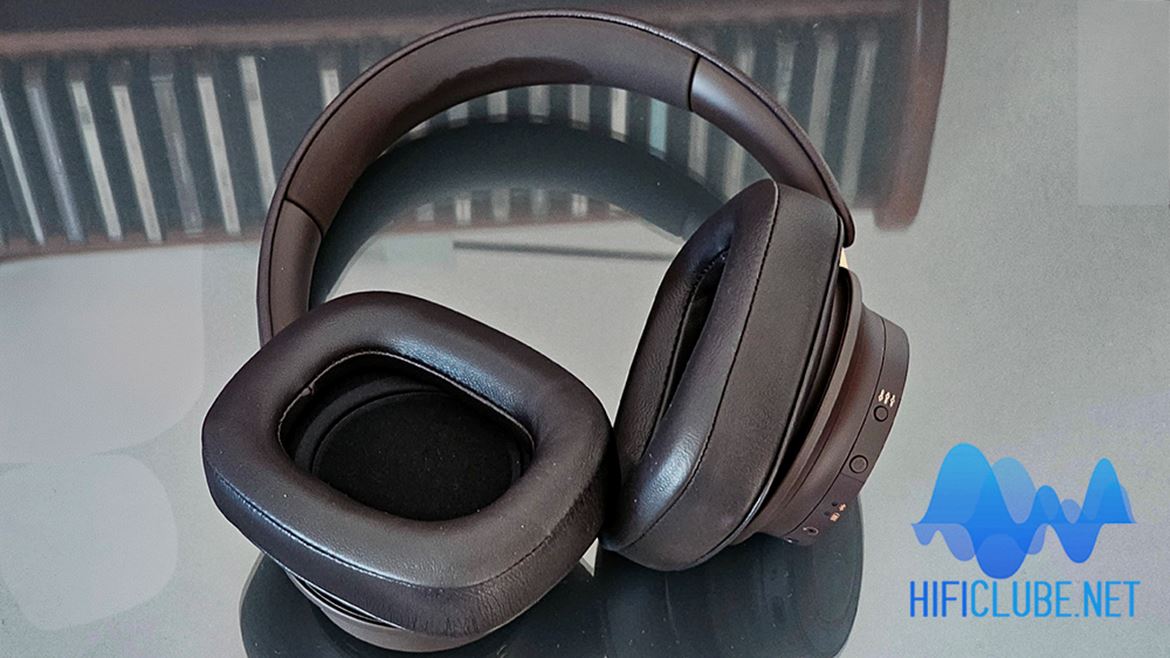
The earpads are almost square, which is a strange choice for circumaural headphones and may not be suitable for oversized ears. My
Smooth dark chocolate
The Dali iO12s come in a dark chocolate dressing. The design is simple, not a contraption-like metal structure of some competitors. The headband is leather-lined with a hidden spring core and two golden aluminium sliding bars to fit all types of heads. The capsules, made of hard plastic, are pivoted to provide lateral adjustment, while the earpads can also tilt to allow vertical adjustment.
The earpads are almost square, which is a strange choice for circumaural headphones and may not be suitable for oversized ears. Fortunately, my medium-sized ears fit snugly inside without losing the acoustic seal, an essential condition for proper bass reproduction.
The Dali iO12’s ear pads are lined with soft, genuine, and durable leather, unlike many competitors' options for synthetic leather, which deteriorates quickly, if you live in a humid climate, or worse if you live by the sea, like me. For example, my Hifimans have needed new pads three times already because they flake like they suffer from psoriasis.
The iO12s are comfortable to use for hours on end, easy to put on and take off, despite not being the lightest in the market, and they effectively shield from outside noise, even without ANC.
Note: The pads are not bevelled; they are equally thick at the front and back but have a small bump at the bottom back for isolation near the outer occipital protuberance.
The build quality alone justifies the iO12's Highend status.

2. Technology
Full-range driver
The 50 mm full-range driver with a rigid paper cone upholds Dali’s tradition of low-distortion, low-coloration drivers with wide dynamic response. However, the significant use of SMC (Soft Magnetic Composite) in the driver's construction sets it apart. SMC, an electrically non-conductive yet magnetically conductive material, reduces distortion caused by eddy currents. It is used in all the driver’s motor parts except the diaphragm and magnets.
In other words, the Dali iO12 boasts the same technology originally developed for the flagship loudspeaker Kore (see Related Articles below). In technological terms, how much more High-end can it be?
Amplification
The Dali iO12 is an active wireless headphone with Class D amplifiers for high efficiency, low distortion, and long battery life (+35 hours).
Connection Options
You can connect the Dali iO12 in four ways:
- Bluetooth (aptX-HD)
- USB-C (96kHz-24 bit)
- 3.5 mm cable/jack in active mode (DSP, ANC, and ‘Bass’ available)
- 3.5 mm cable/jack in fully passive mode (DSP, ANC, and ‘Bass’ not available)
3. Sound Quality
Despite its advancements, I often feel that something is still lost in translation with Bluetooth. However, the evolution of Bluetooth technology has been remarkable, offering better range, stability, and transparency.
The Dali iO12 Bluetooth connection has limitations, despite the aptX-HD codecs used. However, the sound is smooth and full, albeit lacking the transparency of the USB-C connection. In active mode with an analogue cable/jack, the maximum resolution is 48kHz-24 bit, as the analogue signal is converted to digital to allow digital processing (DSP).
The best sound quality is achieved with USB-C in active mode (96kHz-24 bit) and cable/jack in passive mode, the latter depending on the external DAC quality. The passive mode uses only a passive filter and dispenses with battery power, deactivating DSP, ANC, and ‘Bass’.
Note: Without music playing, the fabric-covered analogue cable (jack) makes a loud, raucous noise when rubbed against clothing or slid over with the fingers like a double bass string. This sound is passively amplified in the left earcup but is nearly unnoticeable when music plays. If bothersome, replace the cable with a plastic-coated one to eliminate the noise.
4. Listening
I listened to the Dali iO12 via Bluetooth (aptX-HD) and USB-C using Tidal on my Samsung S23 Ultra: the sound was always excellent, as were the voices in phone calls. I also used USB-C/A (supplied) to connect it to my PC, using River as media player; and to connect directly to my HiFi Rose RS520, providing the best results in active mode (96kHz-24 bit).
I used the analogue cable with the 3.5mm to 6.3mm jack adapter in active and passive modes, powered by iFI Audio Zen 3 and Diablo 2 amplifiers/DACs, and the cute iFI Go bar Kensi (3.5mm jack).
In active mode, the external DAC’s analogue signal is re-digitized (48kHz 24 bit) to allow DSP, ANC, and ‘Bass’ processing. The DSP gives the sound a cross-feed kind of ffect (more spaciousness and bass). Mids have more body and presence with better voice projection. Bass mode (centred at 70Hz) increases quantity at the expense of quality, affecting the 30 to 200 Hz range. I prefer listening in HiFi mode.
The ANC mode is subtle, reducing excessive outside noise without affecting the music much. Some headphones reduce noise more effectively but compromise sound quality by throwing the baby away with dirty bath water. The Dali iO12 doesn’t.
In passive mode, battery power is not used, but DSP, ANC, bass effects and volume controls are lost. The sound quality, however, is excellent and comparable to the best closed dynamic headphones I’ve heard.

Selected Tracks
I've listened to over 50 tracks from various albums, always with great pleasure. However, in honour of Fausto Bordalo Dias' recent passing, I will only mention "Por Este Rio Acima" (1982), a masterpiece of Portuguese popular music that took inspiration from Fernão Mendes Pinto's book "Peregrinação."
The album combines elements of Fado, Portuguese folk music, and African influences. It features great lyrical, melodic, and rhythmic complexity and elaborate musical arrangements. Traditional percussion instruments, flutes, guitars, and piano are used, along with Fausto's emotionally charged vocals and male, female, and mixed choirs. The production is as lush as the tropical landscapes it evokes. This is a must-listen album in Fausto's discography, just like the Dali iO12 headphones that brought Fausto back to me. RIP.
Conclusion
I, JVH, hereby declare that Dali Audio's claim that the iO12 headphones are of Highend calibre is valid, meeting all criteria: build quality, materials, technology, and sound quality (passive mode). They are strongly recommended and the first contender for Hificlube Wireless Headphone of the Year 2024.

